Exploring The Legend of Zelda: Ocarina of Time on 3DS
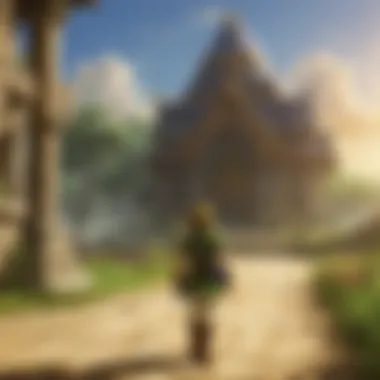
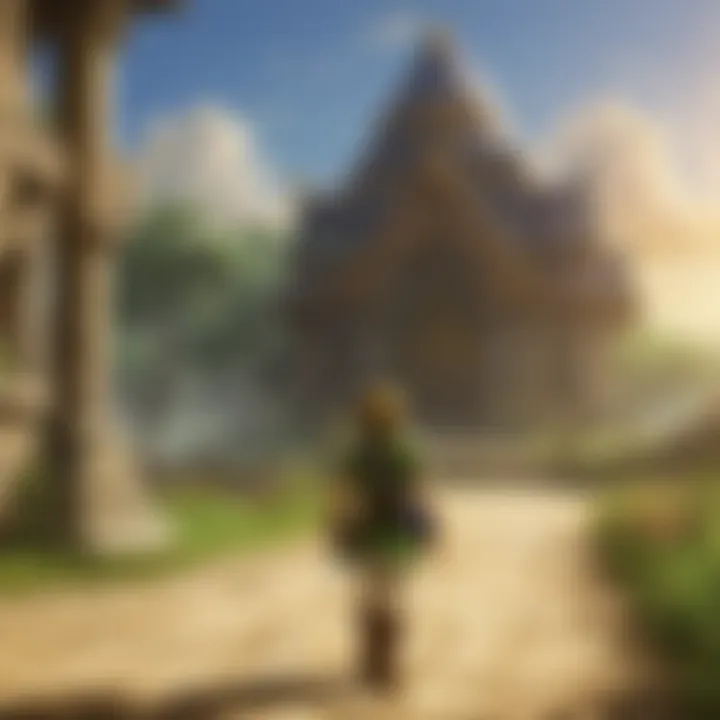
Intro
The Legend of Zelda: Ocarina of Time on the Nintendo 3DS revitalized a classic title, enhancing its gameplay while preserving its core elements. Released originally in 1998 on the Nintendo 64, Ocarina of Time set a benchmark in action-adventure gaming. The 3DS version introduced updated graphics, improved controls, and additional content that enriched the gameplay experience, making it more accessible for both newcomers and veteran players.
This article aims to examine the many layers of this cherished game. We will analyze its gameplay mechanics, character arcs, and the countless quests that define its narrative. Furthermore, we will discuss the graphical and auditory improvements present in the 3DS version and how these elevate the experience. Ultimately, our exploration will shed light on the game's impact on the gaming landscape and its enduring legacy within the Zelda franchise.
Game Reviews
Gameplay Features and Mechanics
The gameplay of Ocarina of Time integrates exploration, puzzle-solving, and combat. Players navigate the world of Hyrule, engaging with its vast landscapes and intricate dungeons. The 3DS version introduces features such as the touch screen controls, making it easier to manage inventory and utilize items quickly. This control scheme is significant as it allows for smoother gameplay, especially in tense situations.
Among the noteworthy mechanics is the use of the Ocarina itself. This instrument serves not only as a musical tool but also as a device that affects time and weather, essential components of the gameplay.
Storyline and Quests
At the heart of Ocarina of Time lies a compelling story. Players take on the role of Link, a young man destined to thwart the evil plans of Ganondorf. The narrative unfolds through various quests, each contributing to Link's growth and the larger story arc. The main quest involves collecting Spiritual Stones and the medallions needed to access the Sacred Realm. These quests are interspersed with numerous side quests that enhance the depth of the gameplay.
Visuals and Sound Design
The visual enhancements in the 3DS version are striking. The graphics have been updated to accommodate the capabilities of the handheld console, resulting in clearer textures and more vibrant colors. Additionally, the sound design has benefited from remastered audio, delivering an immersive experience. Themes such as the iconic Zelda song resonate strongly, heightening emotional moments within the game.
Comparison with Previous Titles
Compared to its original release, the 3DS version of Ocarina of Time offers a significantly improved experience. Features like a fully rotatable camera provide greater control over the environment. The game also includes Master Quest, a variant that challenges players with tougher puzzles and altered dungeon layouts, appealing to seasoned fans seeking more difficulty.
Character Analyses
Popular Characters Overview
Ocarina of Time introduces several memorable characters integral to its story. Link, the protagonist, symbolizes courage and resilience, while Princess Zelda embodies wisdom and grace. Ganondorf, the antagonist, represents the struggle against tyranny and darkness. Other characters like Navi, the fairy companion, play critical roles in guiding players throughout their journey.
Character Development and Backstories
Each character in Ocarina of Time has a unique background that shapes their actions. Link's origin as a Kokiri child transitions to a hero of Hyrule, showcasing significant development. Zelda’s hidden identity as Sheik adds layers to her character, illustrating themes of sacrifice and bravery. Ganondorf's backstory reveals his motivations rooted in his desire for power, establishing a rich narrative fabric.
Role in the Zelda Universe
Ocarina of Time establishes key lore within the Zelda franchise. The concepts introduced here, such as the Triforce, recurrently appear in subsequent titles. This game lays the groundwork for future narratives, making it essential for fans to understand its place in the overall lore.
Fan Theories and Speculations
Numerous fan theories circulate within the community surrounding Ocarina of Time. Some speculate about timelines and alternate realities presented in the game, while others analyze character motivations and relationships. These discussions further engage the community, showcasing the game's depth and reinforcing its legacy.
Lore Discussions
Mythology and Worldbuilding
The world of Hyrule is rich with mythology. Ocarina of Time is steeped in symbolism and lore, from the creation myths surrounding the Golden Goddesses to the detailed histories of the various races inhabiting Hyrule. This depth enriches the player's understanding and engagement with the world.
Legendary Items and Artifacts
Artifacts like the Master Sword and Kokiri Sword are pivotal to the gameplay and narrative. Each item has its own backstory and significance, contributing to the lore of the Zelda universe. The Ocarina itself is a legendary artifact, bridging Link's adventures with the fabric of time.
Link to Real-world Mythologies
The game draws inspiration from various mythologies, forging connections between its narrative and real-world legends. The hero's journey of Link mirrors classic archetypes found in literature, lending depth to his role as the quintessential hero.
Timeline Placement and Theories
Ocarina of Time occupies a crucial place in the Zelda timeline, often thought to be a pivotal point that branches into multiple paths. Theories about its placement influence how fans perceive the other games in the franchise, making it a topic of considerable discussion among enthusiasts.
Gameplay Strategies
Combat Techniques and Tips
Combat in Ocarina of Time is a blend of strategy and skill. Players can utilize a mixture of melee and ranged attacks to defeat enemies. Learning to effectively block and dodge is essential for overcoming tougher foes. Timing, especially with the Z-targeting mechanism, is crucial in battles against bosses.
Puzzle Solutions and Walkthroughs
Puzzles are a hallmark of Ocarina of Time’s gameplay. Many dungeons require players to solve intricate challenges to progress. Detailed guides often assist players in navigating these puzzles, ensuring they do not get stuck without a resolution.
Collectibles and Side Quest Guides
The game features a plethora of collectibles, including Heart Pieces and Gold Skulltulas. Side quests like collecting fairies in the Great Fairy Fountain add layers of objectives for the player to enjoy, creating an enriching experience that extends beyond the main narrative.
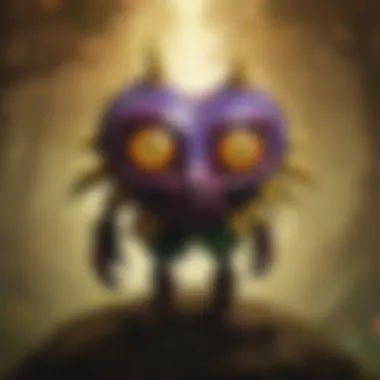
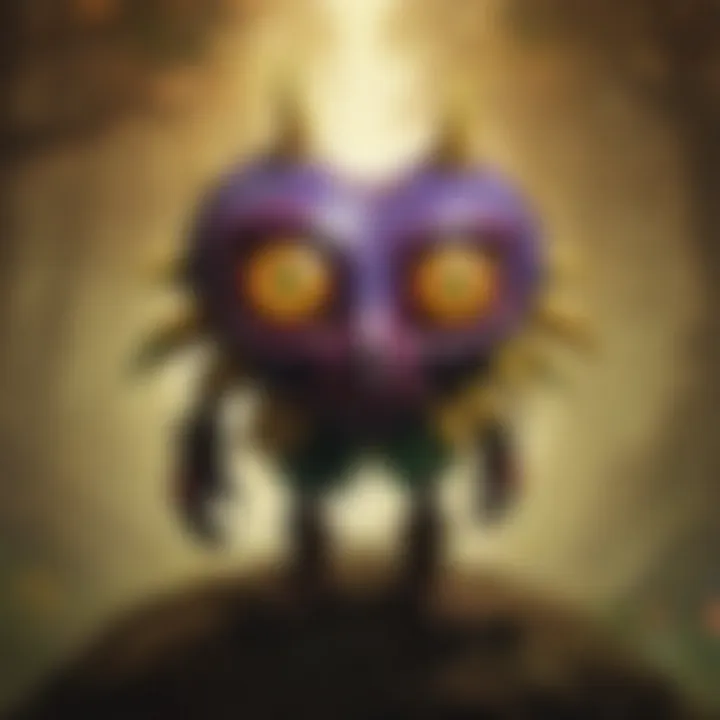
Boss Battles Tactics and Strategies
Each boss in Ocarina of Time presents its own unique set of challenges. Learning their attack patterns is essential for devising successful tactics. Strategies may involve using particular items or exploiting weaknesses, requiring players to think critically about their approach.
"The Legend of Zelda: Ocarina of Time not only shaped the past of gaming but also continues to define its future."
Through this comprehensive exploration, fans and newcomers alike can appreciate the layers of depth and opportunities for engagement Ocarina of Time on Nintendo 3DS provides. The game's evolution only enhances its status as a true classic, reflecting its significance in gaming history.
Prelims to Ocarina of Time
The Legend of Zelda: Ocarina of Time is a cornerstone of both the Zelda franchise and the gaming world as a whole. Its influence extends beyond its release in 1998 on the Nintendo 64, forging pathways for future titles and gaming designs. This particular section presents the historical context and impact on gaming, which are crucial for understanding the game's significance.
Historical Context
To grasp the importance of Ocarina of Time, one must consider the era in which it was released. The late 1990s marked a pivotal moment in gaming history. The transition from 2D to 3D graphics was underway, enabling more immersive storytelling and engaging gameplay. Ocarina of Time emerged during this transformative period, raising the bar for how narrative and gameplay mechanics could intertwine. The game introduced players to a vast open world filled with detailed environments, and intricate quests, and featured innovative gameplay elements like lock-on targeting. These elements were revolutionary for the time and set standards that continued to shape video game development for years.
The game's development was led by Shigeru Miyamoto and his team at Nintendo, who aimed to create a compelling adventure that would resonate with players both emotionally and intellectually. It was also a game that blended various genres, including action, adventure, and role-playing, creating a unique experience that appealed to a wide audience.
Impact on Gaming
Ocarina of Time is not merely a game; it represents a milestone in gaming as a whole. It has been lauded for its narrative depth, gameplay mechanics, and overall artistic achievement. The game introduced features such as real-time combat, a dynamic day-night cycle, and an expansive world with diverse environments, all of which have become staples in many modern games.
The influence of Ocarina of Time can be seen in multiple franchises. Games like Dark Souls and The Witcher 3: Wild Hunt have borrowed heavily from its mechanics and design philosophies. Furthermore, its innovative use of 3D technology served as a foundation for future development in the genre.
"Ocarina of Time not only defined a genre but also transformed how stories could be told in video games."
Both commercial and critical success followed the game's legacy. Notably, it was the first game to receive a perfect score from Edge magazine. This recognition reflects its outstanding gameplay and design, influencing countless developers and shaping the expectations of gamers.
In summary, the historical context and impact of Ocarina of Time are indispensable in understanding its role in the larger narrative of the gaming industry. Its achievements in storytelling, mechanics, and design continue to inspire new generations of game developers and players. The following sections will explore the transition to the Nintendo 3DS and the various gameplay mechanics that make this game a timeless classic.
Transition to Nintendo 3DS
The transition of The Legend of Zelda: Ocarina of Time to the Nintendo 3DS is a pivotal chapter in the game's legacy. This port not only refreshed a beloved classic but also introduced it to a new audience. Understanding the importance of this transition reveals the thoughtful considerations that were made in the adaptation process. Technology in gaming evolves rapidly, and re-exploring an iconic title like Ocarina of Time on a platform with enhanced capabilities is essential for both preservation and innovation. Doing so reinforces the game's relevance in the modern gaming landscape while meeting the expectations of contemporary players.
Reasons for Porting
The porting of Ocarina of Time to the Nintendo 3DS stemmed from various motivations. One key reason was to provide an enhanced gaming experience by taking advantage of the 3DS's advanced hardware. The immersive 3D visual capabilities offered players a chance to experience the lush environments of Hyrule with deeper depth perception. Additionally, the portability of the 3DS appealed to gamers who wished to enjoy this adventure on the go, bridging the gap between nostalgia and modern convenience.
Moreover, a remastered version meant revisiting gameplay mechanics that could benefit from modern standards. Feedback from the gaming community highlighted the need for improvements in control responsiveness and user interface efficiency. These enhancements aimed to streamline gameplay, making it more accessible while retaining the core essence that fans had fallen in love with.
Technical Enhancements
The technical enhancements in the 3DS version of Ocarina of Time included several significant upgrades that improved the overall gaming experience. Notably, the graphics were reworked to support the system’s stereoscopic 3D capabilities. This visual polish lent a fresh aesthetic to the long-established environments, breathing new life into the landscapes and character models without losing their original charm.
The game also implemented improved control schemes that utilized the 3DS's unique features. The addition of the Control Stick, for example, allowed for smoother camera movements and character navigation. This shift made exploring environments more intuitive, addressing some concerns from the original gameplay that some players considered cumbersome.
Furthermore, Ocarina of Time 3D included a more dynamic and user-friendly interface with the introduction of a touch screen. Players could easily access items, equip weapons, and interact with menus seamlessly, enhancing overall gameplay fluidity.
Overall, the transition to the 3DS reflected a careful blend of innovation and respect for a cherished legacy, ensuring that both new fans and veteran players could appreciate the journey once again.
Gameplay Mechanics
In the context of Ocarina of Time, gameplay mechanics are vital to the overall experience, engaging players through a mixture of exploration, combat, and puzzle-solving. The mechanics shape how players interact with the world of Hyrule, allowing for immersive storytelling and memorable encounters. The original release set a high standard for 3D action-adventure games, and the Nintendo 3DS version refines these elements, enhancing both functionality and accessibility.
Core Gameplay Elements
The core gameplay elements of Ocarina of Time include exploration, combat, and puzzle-solving. Players control Link as he traverses the expansive kingdom of Hyrule. Exploration is a significant feature, inviting players to discover various terrains—from lush forests to desolate deserts. Each area contains dungeons filled with challenges. This design encourages players to think critically about their surroundings, uncovering hidden secrets.
Combat in the game is intuitive but demanding. Players utilize a variety of weapons and items, such as swords and bows, while also employing strategy to defeat enemies. The Z-targeting system was revolutionary at its time, allowing for precise aiming and movement during fights.
Puzzle-solving further enriches gameplay. Dungeons are structured around unique puzzles that require players to manipulate objects or utilize items in creative ways. Each puzzle often acts as a gatekeeper to progress, rewarding players with essential items or keys. This balancing act of exploration, combat, and puzzles gives Ocarina of Time its signature appeal.
Gameplay Innovations in the 3DS Version
The Nintendo 3DS release of Ocarina of Time introduces several gameplay innovations that enhance the original experience. First, the touchscreen functionality allows for quicker access to inventory and items. This eliminates unnecessary pauses during gameplay and streamlines the user experience. Players can assign items to different buttons for immediate use, making combat and navigation smoother.
Additionally, the 3D effect adds depth to the visuals, making environments more engaging. This immersion allows players to fully appreciate the meticulous design of Hyrule. The graphical enhancements and improved frame rates make gameplay feel more fluid and dynamic.
The inclusion of Master Quest also adds to the replay value. It offers challenges that remix dungeons and puzzles from the original game, demanding rethinking of previously learned strategies.
Narrative Structure
The narrative structure of The Legend of Zelda: Ocarina of Time is pivotal to understanding its profound impact on players and the gaming culture at large. This structure dictates how the story is delivered and how it resonates with its audience. A strong narrative encourages engagement, creates emotional connections, and drives gameplay forward. For Ocarina of Time, the innovative storytelling techniques employed set a standard for narrative depth that many games post this title strive to achieve.
Story Overview
The story begins in the peaceful land of Hyrule, where Link, the protagonist, is reluctantly drawn into a conflict that threatens his world. After receiving a call to adventure through a series of visions, Link embarks on a journey that spans time and space. He must collect several spiritual stones to access the Sacred Realm, where he faces the powerful sorcerer Ganondorf, who seeks to dominate Hyrule.
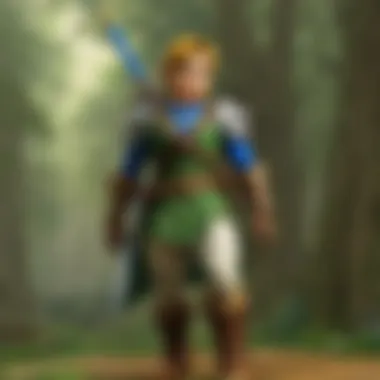
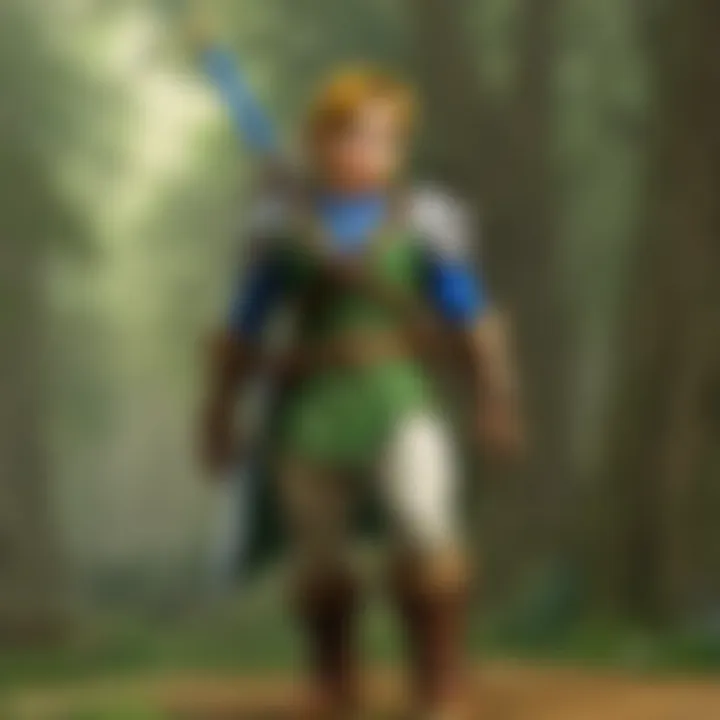
The plot cleverly shifts between two distinct time periods, enhancing the sense of progression. Link transitions from a child to an adult, gaining new abilities, and framing his growth as a crucial element in the quest to save Zelda and thwart Ganondorf’s plans. This duality enriches the overall narrative, allowing players to experience the character’s evolution in response to increasingly complex challenges.
Character Arcs
Character arcs in Ocarina of Time enrich the narrative by showcasing growth and transformation. Link, often viewed as a blank slate, becomes a formidable hero through his experiences and relationships. His initial innocence starkly contrasts with the responsibilities he acquires as he matures.
Zelda, portrayed as both a princess and a guardian, embodies internal conflict as she grapples with her identity. The revelation of her true nature as Sheik highlights her strength and resilience, adding layers to her character. The arc of Ganondorf provides a deeper understanding of villainy—his motivations and the backstory elucidate the reasons behind his quest for power.
The interactions among these characters facilitate emotional investment in the story, making the stakes feel real for the player. Each character’s journey intersects with the others, weaving a rich tapestry of relationships that resonates throughout the gameplay.
Themes and Motifs
Ocarina of Time explores several themes that elevate its narrative beyond mere entertainment. The most prominent theme is that of time, effectively demonstrated through Link’s transformation and the complexities of his quest. This cyclical nature of time also introduces the concept of destiny—Link’s fate is intertwined with the history of Hyrule.
Another notable theme is courage versus fear, encapsulated in Link’s growth as he faces daunting challenges. The inclusion of friendship and sacrifice demonstrates the importance of support systems in overcoming adversity. Additionally, the recurrent motif of music serves as a powerful tool throughout the narrative, with the ocarina acting as a symbol of connection, bridging gaps in time and space.
"Ocarina of Time melds together time, character, and emotion in a way that engages players on multiple levels."
In summary, the narrative structure of Ocarina of Time serves as a foundation for its enduring legacy. Through thoughtful character development and thematic depth, the game transcends traditional storytelling, providing players with a memorable and immersive experience.
Character Analysis
Character Analysis plays a crucial role in understanding the depth of The Legend of Zelda: Ocarina of Time. Each character is meticulously crafted, contributing to the overall narrative and thematic elements of the game. By closely examining characters, players gain insights into their motivations, struggles, and transformations. This not only enhances the gameplay experience but also reinforces the connections between characters and the players.
Link: The Hero's Journey
Link, the central protagonist of the game, embodies the archetypal hero. From his humble beginnings as a Kokiri child, he is thrust into a world of conflict and darkness. His journey is marked by trials that challenge his courage and resolve. As players guide Link through dungeons and confront adversaries, they witness his growth from a naive youth into a capable hero. The Hero’s Journey framework is evident in Link's struggles and victories as he navigates through various challenges to save Hyrule.
Link's character arc is rich with fundamental themes. His bravery inspires those he encounters, while his unwavering determination resonates with players. This evolution keeps players emotionally invested in his quest. Each dungeon not only serves as a physical challenge but also a personal one, reflecting Link's internal growth and resilience.
Zelda: The Prized Princess
Princess Zelda is not merely a damsel in distress but a multilayered character with her own agency and depth. Throughout Ocarina of Time, her role evolves, symbolizing hope and guidance. As the bearer of the Triforce of Wisdom, she represents the balance of power that is vital to the realm of Hyrule.
The duality of Zelda's character is illustrated through her alter ego, Sheik. This transformation allows her to influence the events of Hyrule from the shadows, showcasing her intellect and strategic capabilities. Her connection with Link deepens as they share a common goal to defeat Ganondorf. The interplay between their characters highlights themes of friendship and trust, unveiling the strength behind their partnership.
Villains and Their Motivations
The villains in Ocarina of Time are as pivotal to the character narrative as the heroes themselves. Ganondorf, the main antagonist, is driven by ambition and the lust for power. His desire to obtain the Triforce reveals a darker aspect of human nature, showcasing how ambition can lead to devastating consequences. Ganondorf's motivations are not just for personal gain but also stem from a warped perception of what it means to rule and protect.
Each supporting villain, such as Dark Link and the various forms of Ganon, provides insight into the overarching themes of the game. These characters embody the conflict between good and evil, presenting moral dilemmas and challenges for Link and Zelda. Understanding their motivations enriches the overall experience, emphasizing that each conflict serves a purpose in the narrative structure. Through this exploration of characters, players can appreciate the intricate storytelling and thematic depth of Ocarina of Time.
"The characters are not just tools for gameplay; they are vessels of narrative that drive the emotional core of the story."
Artistic and Audio Design
The artistic and audio design of The Legend of Zelda: Ocarina of Time on the Nintendo 3DS serves as a critical foundation for the game's immersive qualities. The visual landscape and soundscape work in tandem to create an engaging experience that captivates players. This section will dissect the elements that contribute to the game’s aesthetic appeal and how music enhances its storytelling.
Visual Aesthetics
Visually, Ocarina of Time employs a unique art style that blends classic 3D graphics with a whimsical aesthetic. The character designs and environments resonate with the high fantasy elements that characterize the Zelda franchise. Each area, from the verdant fields of Hyrule to the eerie landscapes of the Shadow Temple, is designed to evoke specific emotions and moods. The 3DS version enhances these visuals with improved textures and 3D effects, giving players an engaging sense of depth.
The lighting effects in the game also play a significant role. Shadows cast by trees and buildings in Hyrule Field create a realistic environment that changes as the day progresses. This dynamic interaction enriches the exploration aspect, where players feel a natural connection to the world around them. Moreover, the colors used—bright and vibrant for joyous settings or muted and dark for foreboding areas—effectively convey the narrative’s emotional gravity.
Soundtrack and Its Influence
The soundtrack of Ocarina of Time is one of its defining features. Composed by Koji Kondo, the music blends orchestral and traditional melodies to create an unforgettable auditory experience. Each theme, from the tranquil tunes of Kakariko Village to the intense pieces during boss battles, enhances the gameplay and the narrative.
Incorporating the use of the ocarina as a gameplay mechanic adds depth to the musical elements. Players can learn different songs that have various effects, such as altering the time of day or summoning rain. This integration of music into gameplay not only supports the narrative but also deepens player engagement.
Furthermore, the emotional resonance embedded in the soundtrack connects players with the characters and plot. The thematic motifs associated with Link and Zelda can be heard throughout the score, serving as auditory symbols that reinforce their journeys.
The music in Ocarina of Time is not merely background noise; it serves as a cornerstone of the immersive experience, guiding players through emotional highs and lows.
In summary, the artistic and audio design of Ocarina of Time does not just enhance visual and auditory appeal. It fundamentally shapes the gameplay experience, solidifying its status as a classic within the gaming community. Through nuanced visuals and a powerful soundtrack, players are not just observers but active participants in a living, breathing world.
Cultural Legacy
The cultural legacy of The Legend of Zelda: Ocarina of Time is profound and warrants thorough exploration. This game has transcended the mere label of a classic title within the gaming community. It is a cultural phenomenon, a benchmark that many subsequent titles strive to meet. Analyzing its legacy reveals multiple facets affecting both the gaming industry and fan culture.
Influence on Future Titles
Ocarina of Time has laid the groundwork for modern action-adventure games. Its innovative approach to gameplay mechanics and design choices has influenced numerous titles that followed.
For example:
- The inclusion of a lock-on targeting system in Ocarina of Time has been replicated in numerous games, allowing for smoother combat and more engaging gameplay.
- The game’s use of expansive open-world exploration set a standard for the genre. Titles such as Dark Souls and The Witcher 3: Wild Hunt borrow elements of this exploration within their frameworks.
- Many role-playing games adopted the quest structure and the concept of intertwining narrative threads, similar to that found in Ocarina of Time.
Through these advancements, Ocarina of Time has not only shaped the Zelda franchise but also left an indelible mark on the gaming landscape. New developers and established studios alike look back to this title for inspiration.


Cross-Media Expansion
The impact of Ocarina of Time extends beyond gaming. It has permeated various forms of media, showcasing the versatility and endurance of its narrative and characters. For instance, there have been:
- Comics: Several adaptations have been made, reflecting the game's story. These enjoy popularity among fans, often exploring character depths not covered in the game.
- Music: The game's soundtrack has inspired orchestral concerts and arrangements. Fans often gather to celebrate the music, demonstrating its emotional resonance.
- Fan Art and Merchandising: The game's visual style continues to inspire artists. Fans produce an array of artwork, creating a vibrant community that celebrates its aesthetics. Furthermore, merchandise related to Ocarina of Time remains in high demand, illustrating its ongoing popularity.
"The Legend of Zelda: Ocarina of Time is not just a game; it's a pivotal part of modern nerd culture. Its reach transcends pixels.
Community Engagement
Community engagement around The Legend of Zelda: Ocarina of Time showcases how this classic game continues to resonate with fans worldwide. Throughout its history, players have formed a vibrant community, sharing theories, gameplay experiences, and competitive challenges that highlight the game’s depth and appeal. This engagement is essential in understanding the legacy of Ocarina of Time and its enduring status in the hearts of many.
Fan Theories and Speculations
Fan theories surrounding Ocarina of Time enrich the narrative experience and invite deeper exploration of game lore. Players often speculate on the underlying meaning of the story and lore elements. These theories range from the nature of the Triforce to Link's origins and the implications of time travel.
The depth of speculation stems from the game's narrative complexity, leading to discussions about the motives of key characters and their relationships. For example, theories regarding the relationship between Link and Zelda, or the true nature of Ganondorf, offer intriguing insights. Players even delve into esoteric details, such as interpreting the symbolism behind the Seven Sages or the significance of the various temples Link navigates.
Various community platforms, such as reddit.com, host discussions where fans dissect these ideas. Such platforms provide an open forum for players to share insights and debate interpretations, fostering a sense of community among enthusiasts. Creating these theories not only enhances individual perspectives on the game but also contributes to a broader cultural understanding of the Zelda series.
Speedrunning and Challenges
Speedrunning has emerged as a thrilling aspect of community engagement, pushing the boundaries of skill within Ocarina of Time. Many gamers dedicate significant hours to mastering this classic title, focusing on completing the game in the least amount of time possible.
Skills needed in speedrunning include precision movement, strategic item usage, and comprehensive knowledge of game mechanics. This competitive facet has birthed select communities focused on sharing techniques and strategies.
Events such as Games Done Quick demonstrate the excitement surrounding speedrunning. These marathons collect donations for charity, showcasing impressive time runs. Players often share their runs through platforms like YouTube, allowing others to learn from their techniques.
In addition, challenges such as “no major glitches” runs or completing the game with specific constraints add layers of complexity. Such challenges emphasize both creativity and technical knowledge, making them engaging for both participants and spectators. The speedrunning community for Ocarina of Time encourages continuous improvement and fosters camaraderie among gamers, further solidifying the game's impact on modern gaming culture.
"The community engagement surrounding Ocarina of Time transforms a solitary gaming experience into a shared adventure that transcends time and platform."
In summary, the community engagement present in Ocarina of Time plays a crucial role in its cultural significance. From fan theories that revitalize narratives to the adrenaline of speedrunning challenges, the community breathes new life into this classic game, proving that its legacy is not just in its gameplay, but in the connections forged through shared experiences.
Comparative Analysis
In any discourse surrounding video game history and evolution, comparative analysis serves a significant purpose. It enhancess the understanding of how titles influence one another and how they reflect the changing landscape of gaming. In this context, examining The Legend of Zelda: Ocarina of Time alongside its successors and predecessors offers insights into design choices, gameplay mechanics, and narrative structures that have shaped the franchise as a whole. For enthusiasts and scholars alike, this analysis is not merely academic. It also deepens the appreciation of what makes each entry stand out or blend into the larger narrative of the gaming world.
Through comparative analysis, one can delineate the innovative strides made in game design, storytelling, and player engagement as seen in Ocarina of Time compared to Breath of the Wild. This juxtaposition reveals trends in player expectations and technological advancements that have redefined gaming experiences. Additionally, contrasting Ocarina of Time with prior titles showcases foundational elements that paved the way for its success, such as 3D graphics and immersive gameplay.
Essentially, this discussion not only enriches the understanding of individual titles but also elucidates the ongoing legacy of the Zelda franchise in gaming culture.
Ocarina of Time vs. Breath of the Wild
When contrasting Ocarina of Time with Breath of the Wild, several key aspects emerge.
First, Ocarina of Time introduced a structured open-world experience. Players explored Hyrule with a sense of purpose, guided by a well-defined narrative and set objectives. The game was celebrated for its blend of puzzle-solving, combat, and exploration, fostering a sense of adventure within a carefully crafted lore. The mechanics, such as the Z-targeting system, revolutionized combat in 3D environments and are often credited with enhancing player engagement.
On the other hand, Breath of the Wild radically redefined the concept of open-world gaming altogether. It embraced a non-linear approach, allowing players to tackle challenges in virtually any order. This flexibility created a profound sense of freedom, encouraging exploration and experimentation in ways not previously possible. The physics engine and the inclusion of advanced crafting mechanics added layers of depth that appealed to both seasoned players and newcomers.
In terms of visuals, both games reflect their respective technological periods. The vibrant, stylized visuals of Breath of the Wild starkly contrast with the more realistic approach of Ocarina of Time, showcasing advancements in graphics technology that enhance immersion.
Importantly, both games share a thematic connection. The journey of Link continues to be central, with exploration and the battle against evil as unifying themes, forming a bridge between generations of gameplay.
Ocarina of Time and Its Predecessors
Looking at the predecessors of Ocarina of Time sheds light on its profound influence within the Zelda series. The original The Legend of Zelda, released in 1986, introduced players to the fantasy world of Hyrule, paving the way for future installments. Its top-down perspective and open-world design set a foundation that Ocarina of Time would expand upon with the advent of 3D gameplay.
Zelda II: The Adventure of Link offered a different gameplay experience, incorporating side-scrolling elements and RPG-like progression, which deviated from its predecessor's design. While it became a subject of contention among fans, it highlighted the willingness of the franchise to experiment with gameplay.
In terms of mechanics, Ocarina of Time retained the core dungeon exploration and puzzle elements established in earlier titles while integrating innovative features like a real-time combat system and time travel mechanics through the use of the Ocarina itself. The success of these mechanics significantly influenced future titles, reinforcing the Zelda series' reputation for rich gameplay.
Ultimately, by examining these relationships, one gains a better understanding of Ocarina of Time not only as a standalone work but also as an iteration in a broader narrative about evolving gameplay design and storytelling in video games.
Epilogue
The conclusion of this article on The Legend of Zelda: Ocarina of Time serves to encapsulate the exploration of its aspects and contributions. The significance of this game in the broader context of gaming history cannot be overstated. It transformed expectations for narrative depth, gameplay mechanics, and character development in video games.
An important aspect to consider is the improved storytelling elements and gameplay innovations that the Nintendo 3DS version brought. These enhancements allowed both newcomers and veteran players to appreciate the intricate world of Hyrule with fresh eyes. It also highlights how the franchise continues to evolve, accommodating modern gaming preferences while retaining its core essence.
The depth of character arcs, particularly of Link and Zelda, allows players to form a connection that elevates the gaming experience beyond mere play. The ability to see these dynamics unfold on a portable device only adds to its charm.
Final Thoughts
Reflecting on Ocarina of Time enhances appreciation for its role within not just the Zelda franchise, but the gaming industry at large. The meticulous effort in designing gameplay mechanics and character dynamics, alongside its immersive narrative, created an experience that was nothing short of revolutionary. Players revisit the game not just for nostalgia but to relive the integration of challenge and story.
As we ponder this title, it becomes evident that it is much more than a classic. It symbolizes a turning point in gaming where technology, creativity, and storytelling merged to create something remarkable. This game continues to resonate globally, influencing up-and-coming developers and engaging players for generations.
The Enduring Nature of the Legend
The lasting impact of Ocarina of Time is evident in its continued relevance in gaming discussions and fandoms. Its influence is reflected in subsequent Nintendo titles and other franchises, which draw inspiration from its design philosophies.
Moreover, the community surrounding Zelda demonstrates how games can foster lasting connections. Fan theories, art, and speedrunning communities still thrive and celebrate the game. This engagement speaks volumes about the title's ability to resonate on a deeper emotional level.







